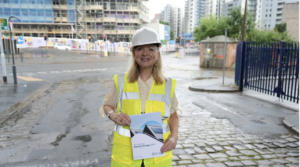After the Twitterstorm…
Two recent examples in Sheffield show how social media can quickly mobilise and energise people’s opposition and stiffen their resolve to challenge an apparently indifferent planning system.
Save Devonshire Street and Save Our Cultural Industries Quarter campaigns helped to amplify concerns about how the city is being developed. They also show we need practical solutions to deliver possible long term positive pragmatic outcomes.
Sheffield is not alone in experiencing this, there has been a sudden surge of opinions against development, with campaigners, community activists, architects getting themselves in a social-media lather while wrestling with an ‘indifferent’ planning system and development industry.
London is undergoing massive development resulting in pressures, as described by Susie Clapham of the East End Preservation Society in the Architects Journal, Aug 2015:
‘The public has realised that terrible schemes are being given planning consent. If we want to the keep the buildings and areas we love then we are going to have to fight for them.’
That same sense of frustration is felt in Sheffield. We need to channel this, moving our focus from campaign and crowdfunding tactics to achieve lasting solutions. I want to chart a path that helps to mobilise independent technical expertise for communities to deliver welcome development via social businesses such as Integreat Plus, which I’m involved with.
Throughout the 1960s and 1970s our cities underwent great change embracing new forms of residential, retail and business accommodation. Too often these were foisted on communities via compulsory purchase, dramatic remodelling places with little or no consultation.
‘It’s about recognising that out of this turbulence, meaningful outcomes emerged. We have more tools at hand thanks to the past and we should use them – especially those afforded by the Localism Act 2012 – in shaping our places.’
Sheffield bought into the optimism of the 1950s and 1960s producing some the UK’s more elegant contemporary housing estates, civic buildings and modernist infrastructure. It planned and built new innovative social housing, schools, health centres investing heavily in a ‘confident vision’ of the future. But by the late 70s this was fast disappearing.
Despite these improvements in our cities, this top-down wholesale modernist re-engineering of our communities all too often ignored people’s social, cultural, domestic histories, relationships and identities. Anyone who raged against this progress was seen as eccentric. However, they touched the Zeitgeist.
Today we all enjoy the outcomes of these campaigns led by Betjeman, Nairn, Pevsner, Jacobs, that saved St Pancras, Covent Garden or Borough Market and more localised examples in Sheffield with the growth of community led housing associations such as North Sheffield HA (now Arches Housing) set up in the wake of community campaigns. These were campaigns that looked to breathe new life into much loved local community buildings or housing threatened with wholesale clearance and demolition across many parts of city.
So what? What is this to do with today’s campaigns? For me it’s about recognising that out of this turbulence, meaningful outcomes emerged. We have more tools at hand thanks to the past and we should use them – especially those afforded by the Localism Act 2012 – in shaping our places.
Neighbourhood plans provide local people with opportunities to develop a plan for their area, and with it, take greater control over the nature of development. It enables people to decide where new developments should be located, what they should look like and even in some circumstances grant planning permission for the developments they want to see go ahead through neighbourhood development orders. It is not a Nimby’s charter but can be Quimby – Quality in my backyard!
Neighbourhood plans can be created by town and parish councils but also in areas where no such councils exist. In those circumstances a neighbourhood forum (which must consist of 21 people who live, work or have an interest in the area) can be created to steer a plan. The exact boundaries of a neighbourhood are subject to agreement with the local authority and the plans will be subject to a public consultation and ballot process. Once in place, they form part of the statutory plan.
Why not neighbourhood plans for both quarters? Let’s set up forums for placing them at the heart of a planning process that could start to heal some of the scars opened up by recent campaigns. Let’s use the momentum to increase civic pride, social and business participation and, over time, encourage better-informed design solutions that are more sympathetic to both quarter’s ambitions. A neighbourhood plan could bring forward localised planning policy to ensure heritage and even affordable business space or other concerns are properly addressed.
















Neighbourhood plans a nice little earner for this type of consultancy I suppose.